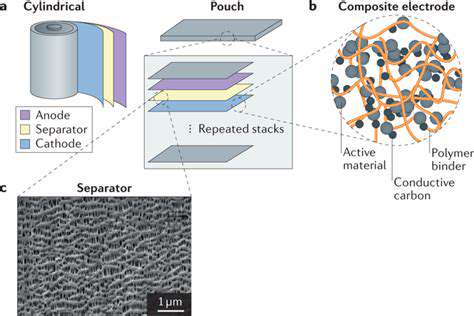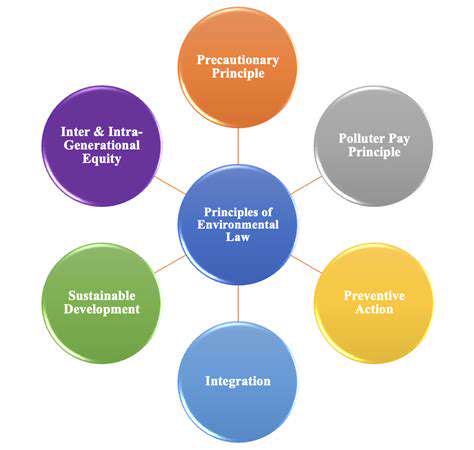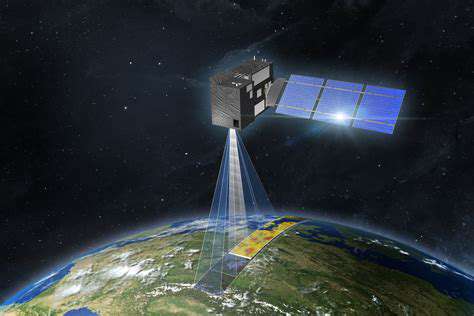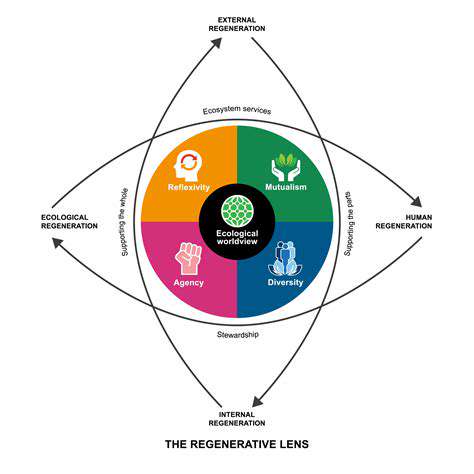Closed-loop systems are crucial for sustainable human presence in space. Instead of relying on constant resupply missions from Earth, these systems aim to create self-sufficient environments, minimizing the massive logistical challenges associated with transporting resources from our planet to distant destinations. This shift towards closed-loop systems is not just about reducing the burden on Earth's resources; it's about increasing the long-term viability of space exploration and potentially enabling missions to destinations beyond the immediate reach of Earth.
Resource Recycling and Conservation: The Core Principle
The core principle behind closed-loop systems lies in their ability to recycle and reuse resources. This includes everything from the air we breathe to the water we drink and the food we eat. By capturing and processing waste products, these systems aim to create a self-contained ecosystem that minimizes waste and maximizes resource utilization, a critical aspect for any long-duration space mission.
Water Reclamation: A Key Component of Closed-Loop Systems
Water reclamation is a pivotal part of closed-loop systems in space exploration. The process involves collecting and purifying waste water, effectively turning human waste into reusable water. This is a crucial aspect for reducing the amount of water that needs to be transported from Earth, especially for missions to the Moon or Mars. This process also minimizes the volume of waste products that need to be dealt with, thus reducing the overall environmental footprint of the mission.
Food Production: Cultivating Resources in Space
Closed-loop systems also encompass the production of food in space. This involves growing crops or raising livestock in controlled environments. This approach ensures a continuous supply of nutritious food, reducing reliance on pre-packaged and preserved foods which can have limited nutritional value. This self-sufficiency in food production is critical for the health and well-being of astronauts on long-duration missions.
Atmosphere Management: Creating a Breathable Environment
Maintaining a breathable atmosphere is a critical element of closed-loop systems. These systems capture and purify exhaled air, removing carbon dioxide and replenishing oxygen. This intricate process ensures a safe and healthy environment for astronauts, minimizing the risk of environmental hazards associated with a lack of a breathable atmosphere. The design and implementation of these systems are incredibly complex and require significant technological advancements.
Waste Management: Minimizing Environmental Impact
Effective waste management is another key aspect of closed-loop systems. These systems need to capture and process various forms of waste, from food scraps to human excrement. Recycling and repurposing waste materials not only reduces the overall environmental impact of the mission but also conserves precious resources, further enhancing the sustainability of long-duration space missions. Proper waste management is essential for maintaining a healthy and safe environment for astronauts.
The Future of Space Exploration: Expanding Horizons with Closed-Loop Systems
Closed-loop systems represent a paradigm shift in space exploration, enabling the possibility of long-duration missions to destinations beyond our solar system. By creating self-sufficient environments, these systems pave the way for future exploration, reducing the reliance on Earth-based resources and increasing the sustainability of space travel. These systems have the potential to open new avenues for space colonization and scientific discovery.
Harnessing Photosynthesis for Oxygen and Food Production

Harnessing the Power of Sunlight
Photosynthesis, the remarkable process by which plants and other organisms convert light energy into chemical energy, is a fundamental process for life on Earth. Understanding and harnessing this process could revolutionize our energy production and address critical environmental challenges. The potential for sustainable energy generation through mimicking or enhancing natural photosynthesis is immense. This approach could offer a clean and renewable alternative to fossil fuels.
Sunlight, a virtually inexhaustible resource, holds the key to powering our future. Capturing and converting this energy into usable forms is a crucial step toward achieving a sustainable energy system. Mimicking the efficiency of natural photosynthesis could significantly improve energy conversion rates.
Mimicking Natural Processes
Scientists are actively exploring ways to mimic the intricate mechanisms of natural photosynthesis. This involves studying the various proteins and pigments involved in light absorption and energy transfer within plant cells. By understanding these processes, researchers aim to replicate them in artificial systems.
One crucial aspect of this research is the development of efficient light-harvesting systems. These systems need to be able to capture sunlight effectively and transfer the energy to the chemical reaction sites.
Improving Efficiency and Stability
Current photosynthetic systems have limitations in terms of efficiency and stability. Researchers are working on improving the design of these artificial systems to overcome these obstacles. This includes developing materials that can withstand harsh environmental conditions and optimize energy transfer pathways.
Another key challenge is enhancing the overall efficiency of the entire process. Improving the conversion of light energy into chemical energy is crucial for maximizing the output of these systems. This involves refining the catalysts and reaction pathways to achieve higher conversion rates.
Developing Novel Materials
A crucial aspect of mimicking photosynthesis involves the development of novel materials that can effectively absorb and utilize sunlight. These materials need to exhibit high efficiency in light absorption and have a long lifespan. Advanced materials science plays a vital role in creating these tailored materials.
Applications in Energy Production
Harnessing photosynthesis for energy production has far-reaching applications. It could lead to the development of new solar energy technologies, which could significantly reduce our dependence on fossil fuels. This approach could also be applied to other areas, like biofuel production and carbon capture.
Environmental Implications
The implications of harnessing photosynthesis for energy production extend beyond simply providing a clean energy source. It could have a profound impact on environmental sustainability. This method could potentially help to mitigate climate change by reducing greenhouse gas emissions. A shift towards sustainable energy solutions is crucial for preserving our planet's health.
Future Research Directions
Further research in this area is crucial to unlock the full potential of photosynthesis for energy production. Researchers are exploring various avenues, including genetic engineering of plants to enhance photosynthetic efficiency, and creating artificial photosynthetic systems with improved stability and efficiency. Continued advancements in these areas could lead to significant breakthroughs in energy production and environmental sustainability.
Recycling Waste and Utilizing Byproducts

Recycling Waste Materials
Recycling waste materials is a crucial aspect of environmental sustainability. It involves collecting, processing, and reusing discarded materials to create new products. This process significantly reduces the demand for raw materials, thereby minimizing the environmental impact of resource extraction and manufacturing. Recycling conserves valuable natural resources like timber, minerals, and water, which are finite and often require significant energy to obtain. It also plays a vital role in reducing landfill waste, preserving precious land space, and mitigating the negative effects of pollution.
The benefits of recycling extend beyond environmental protection. It fosters economic growth by creating jobs in the recycling industry, from collection and processing to manufacturing new products. This circular economy approach not only protects our planet but also stimulates economic activity and promotes sustainable development. Recycling also helps to reduce the amount of waste that ends up in landfills, which in turn helps to conserve precious land resources.
Utilizing Byproducts
Byproducts, often overlooked as waste, represent a valuable resource waiting to be harnessed. These materials, generated as a consequence of a primary process, can be repurposed into new products, reducing waste and minimizing the environmental footprint of industries. This approach not only reduces the amount of waste sent to landfills but also creates new avenues for economic development and innovation. Careful consideration of byproducts can unlock significant potential for resource efficiency.
Many industries generate substantial amounts of byproducts that can be reused. Exploring and implementing innovative strategies for utilizing these byproducts is essential for creating a more sustainable future. By transforming these materials into valuable resources, we can reduce reliance on virgin materials and lower the strain on natural ecosystems. This approach also opens doors for new business opportunities and fosters a more circular economy.
Waste Management Strategies
Effective waste management strategies are critical for minimizing the environmental impact of our consumption habits. Proper waste segregation, recycling programs, and responsible disposal methods are all vital components of a comprehensive waste management plan. Implementing these strategies effectively requires a collective effort from individuals, communities, and businesses. A well-designed system helps to reduce waste sent to landfills and promotes resource recovery, ultimately contributing to a more sustainable future.
Community engagement and education play a crucial role in promoting responsible waste management. By raising awareness about the importance of recycling and utilizing byproducts, we can empower individuals to make conscious choices that minimize their environmental impact. Public awareness campaigns and educational programs are indispensable tools in fostering responsible waste management practices.
Innovative Recycling Technologies
Advancements in recycling technologies are constantly pushing the boundaries of what's possible in waste management. Innovative methods are emerging that allow for the recovery of materials from previously unrecyclable sources. These technologies improve the efficiency and effectiveness of the recycling process, maximizing the amount of valuable resources that can be recovered from waste. These advancements are crucial for increasing the overall success rate of recycling programs.
Investing in research and development of these innovative technologies is essential. These technological advancements are key to achieving a truly sustainable waste management system. This will lead to a more efficient and effective use of resources and a significant reduction in the amount of waste ending up in landfills. These efforts will also help in reducing the environmental impact of various industries.
Berries, a vibrant array of colors and flavors, are a fantastic low-calorie snack option. Packed with antioxidants, these little powerhouses offer a sweet and satisfying crunch. From plump blueberries to juicy strawberries, raspberries, and blackberries, berries provide essential vitamins and minerals without a hefty calorie count. Their naturally occurring sugars contribute to a delightful taste experience, while their low glycemic index makes them a smart choice for managing blood sugar levels. Incorporating berries into your daily routine can be as simple as enjoying a handful as a midday snack or adding them to your breakfast yogurt or oatmeal.
Challenges and Future Directions for Bio-Regenerative Systems
Deciphering Cellular Communication
Understanding the intricate language of cellular communication is paramount to developing effective bio-regenerative systems. This involves identifying and characterizing the signaling pathways that govern cell proliferation, differentiation, and tissue regeneration. Researchers must unravel the complex interplay of growth factors, cytokines, and extracellular matrix components to manipulate these processes precisely. This knowledge will be crucial for directing cell behavior and orchestrating the regeneration of damaged or diseased tissues.
The complexity of these interactions requires advanced techniques in molecular biology, genomics, and proteomics. Successfully decoding the cellular communication network will enable us to design bio-regenerative systems that respond to specific cues, promoting tissue repair and functional restoration.
Optimizing Biomaterial Properties
Biomaterials play a critical role in bio-regenerative systems, providing scaffolds for cell growth and tissue regeneration. Their properties, including biocompatibility, biodegradability, and mechanical strength, directly influence the success of the system. Developing biomaterials that mimic the natural extracellular matrix (ECM) is essential to promote optimal cell adhesion, proliferation, and differentiation.
Future research must focus on tailoring these properties to specific tissue types, ensuring that the biomaterial supports the specific needs of the cells it is meant to regenerate. This includes investigating the effect of porosity, surface topography, and material composition on cell behavior.
Scalability and Cost-Effectiveness
One significant hurdle in the development of bio-regenerative systems is achieving scalability and cost-effectiveness. Currently, many bio-regenerative approaches are laboratory-based, and their application to large-scale clinical use remains a challenge. Developing robust, scalable manufacturing processes is crucial for making these systems accessible to a wider patient population. This includes exploring 3D bioprinting techniques and other advanced fabrication methods for creating intricate tissue structures.
Reducing the cost of materials and production processes is also essential for making bio-regenerative therapies more accessible. Innovative approaches to material synthesis, coupled with efficient production methods, are needed to bring the cost down to a level that will support widespread implementation.
Ethical Considerations in Bio-Regenerative Medicine
As bio-regenerative systems advance, ethical considerations become increasingly important. Careful evaluation of the potential risks and benefits, including the possible misuse of these technologies, is critical. Addressing issues such as safety, efficacy, and equitable access to these treatments is essential for responsible development and implementation.
Integrating Bio-Regenerative Systems with Existing Therapies
Future research should explore the potential of integrating bio-regenerative systems with existing medical therapies. This synergistic approach could enhance the efficacy of treatments and improve patient outcomes. For instance, combining bio-regenerative scaffolds with targeted drug delivery systems could provide a more comprehensive approach to tissue repair and regeneration.
Maintaining Long-Term Tissue Function
The long-term functionality of regenerated tissues is a significant challenge. Ensuring that the regenerated tissue integrates seamlessly with the surrounding native tissues, maintaining its structural integrity, and preserving its normal function over time is critical for clinical success. This requires a deeper understanding of the mechanisms governing tissue maturation and remodeling.
Addressing the Complexity of Disease Models
Bio-regenerative therapies must be tailored to the specific needs of various diseases, considering the complex interplay of genetic, environmental, and epigenetic factors. Creating accurate and relevant disease models that mimic the pathophysiology of specific conditions is crucial for evaluating the efficacy of bio-regenerative systems. Developing more sophisticated in vivo models will enable researchers to test the long-term effects of these interventions and ensure that their approaches are clinically effective.
The Economic and Societal Implications of Sustainable Off-World Habitats
The Potential for Resource Independence
Sustainable off-world habitats, if successfully implemented, could offer a significant degree of resource independence for Earth. By establishing closed-loop systems capable of producing food, water, and other essential resources, these habitats could reduce reliance on Earth's finite resources and potentially mitigate the strain on our planet's ecosystems. This resource independence could have profound implications for global economics, reducing the cost of materials and increasing the availability of critical resources, potentially fostering greater global stability and reducing conflicts over resources.
Furthermore, the development of these technologies could stimulate innovation in various fields, creating new industries and jobs. The need to engineer and maintain these complex ecosystems could lead to advancements in materials science, biotechnology, and environmental engineering. This boost in technological innovation could ripple through various sectors, fostering a more resilient and adaptable global economy.
Addressing Population Pressures on Earth
The burgeoning human population on Earth is placing increasing pressure on our planet's resources and ecosystems. Sustainable off-world habitats could offer a potential solution to this challenge, providing a means of mitigating population density and its associated environmental and social pressures. By allowing a portion of the global population to relocate to off-world habitats, Earth's carrying capacity could be potentially alleviated, leading to a more sustainable future for our planet.
However, the ethical considerations of such a shift are complex and require careful consideration. Issues surrounding equitable distribution, access to resources, and the potential displacement of existing communities need careful consideration before large-scale migration to off-world habitats becomes a reality.
Technological and Engineering Challenges
Creating sustainable off-world habitats presents significant technological and engineering challenges. These habitats will need to be self-sufficient, capable of producing food, water, and energy without relying on constant resupply from Earth. This requires innovative solutions for closed-loop resource management, advanced biotechnology for food production, and sustainable energy systems. Developing these technologies, while challenging, is crucial for the feasibility and success of off-world habitats.
Economic Incentives and Investment
The development of sustainable off-world habitats will likely require substantial investment and a significant shift in economic priorities. The initial costs associated with building and maintaining these complex ecosystems will be substantial. However, the potential economic benefits, such as resource independence, new industries, and the expansion of human potential, could make these investments worthwhile in the long run. Attracting investment and fostering a supportive regulatory environment will be critical to realizing the full potential of these endeavors.
Ethical Considerations and Global Governance
The establishment of off-world habitats raises crucial ethical considerations that require careful attention. Issues such as the rights of individuals living in these habitats, the equitable distribution of resources, and the potential for exploitation of space resources need to be addressed in a transparent and inclusive manner. International cooperation and the development of robust global governance frameworks are essential to ensure that the development and use of off-world habitats are ethical, sustainable, and beneficial for all of humanity.











